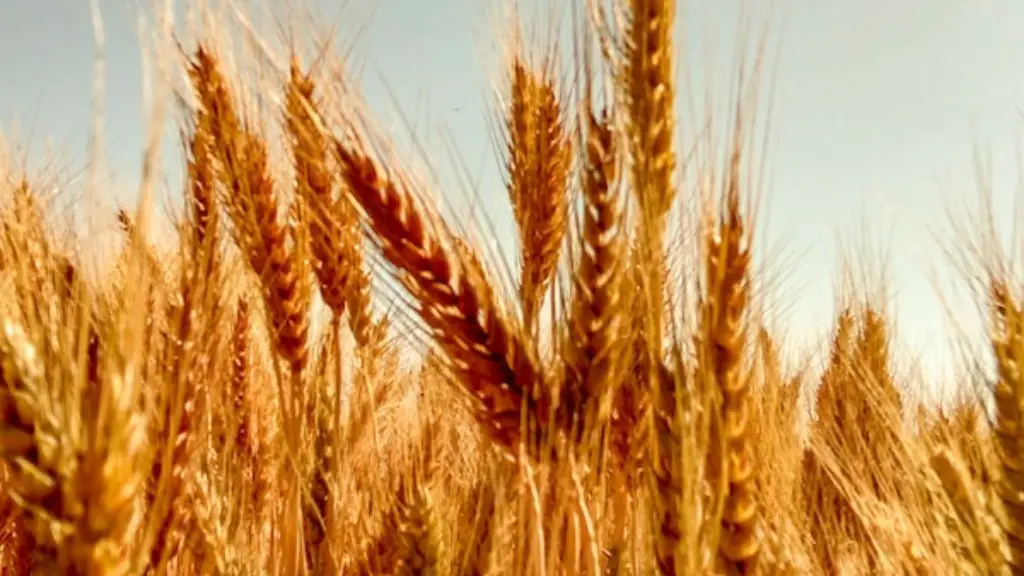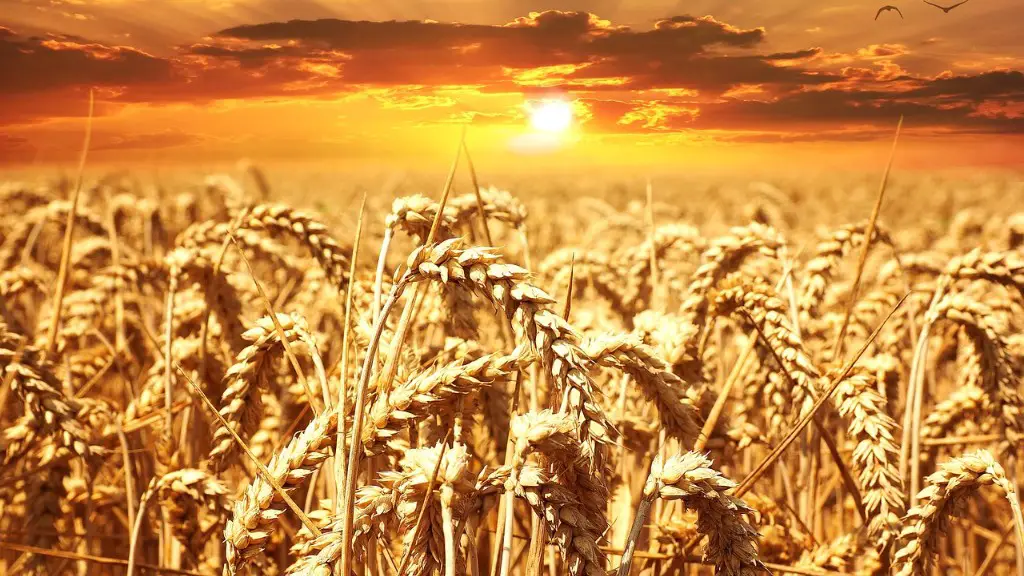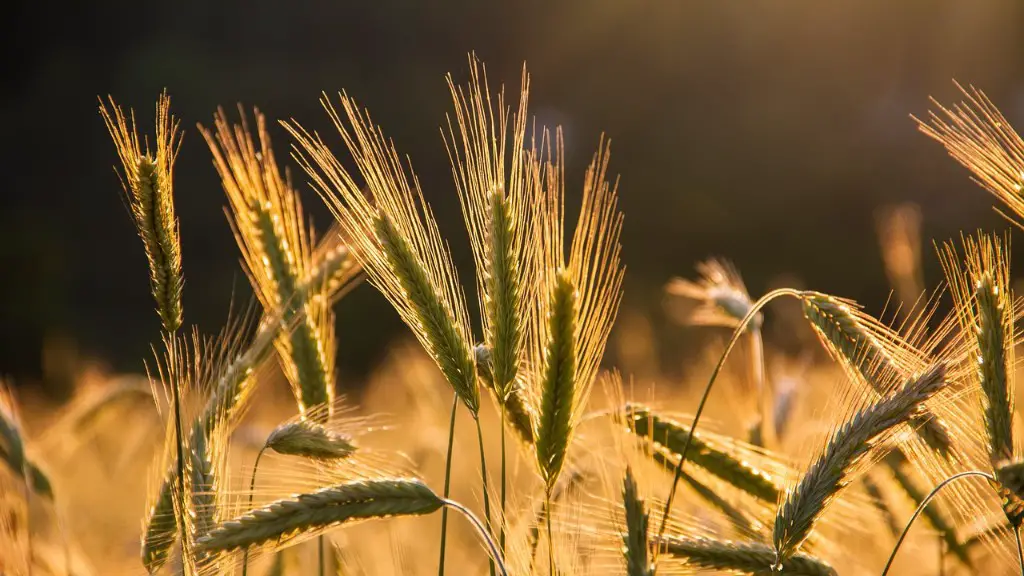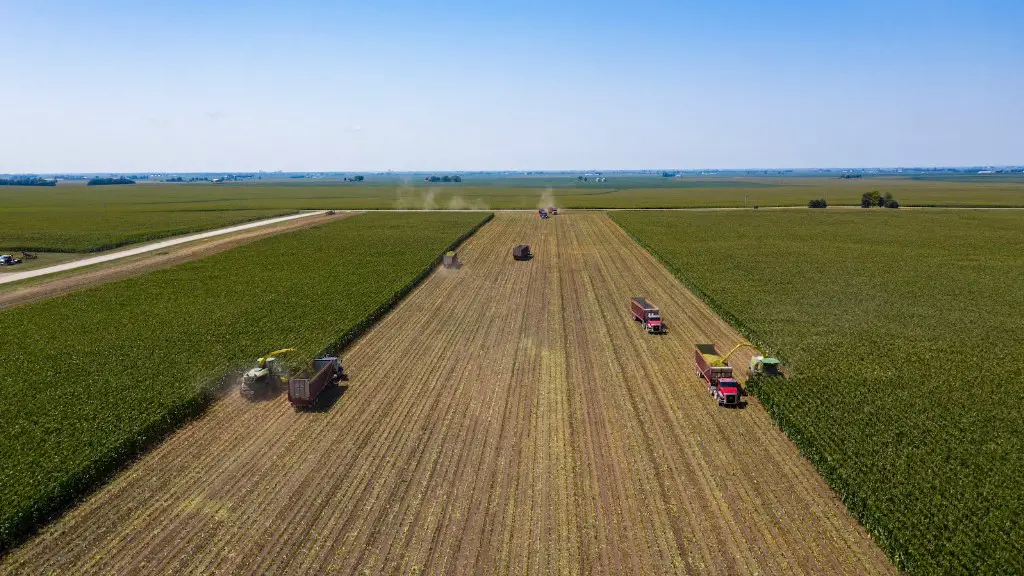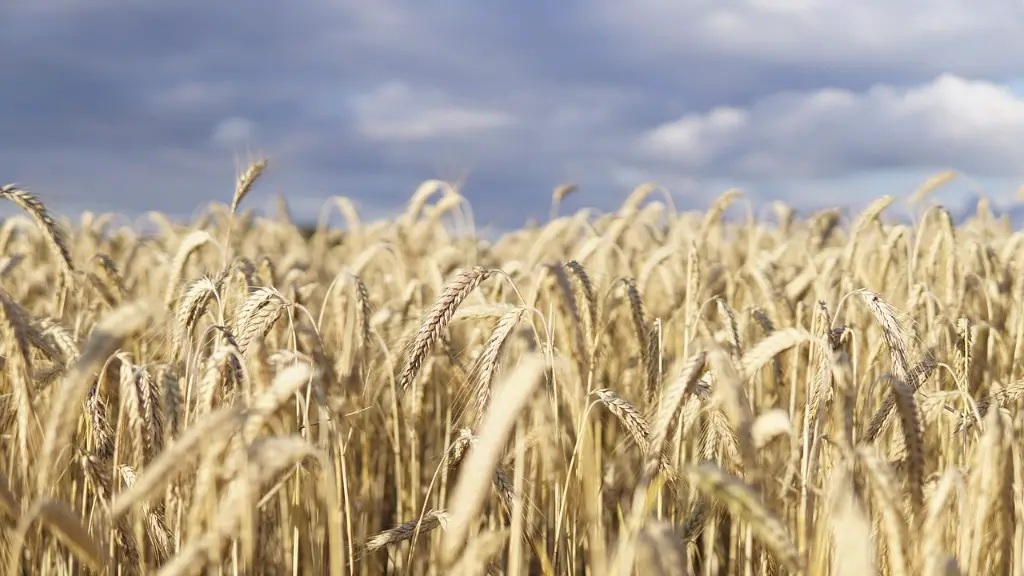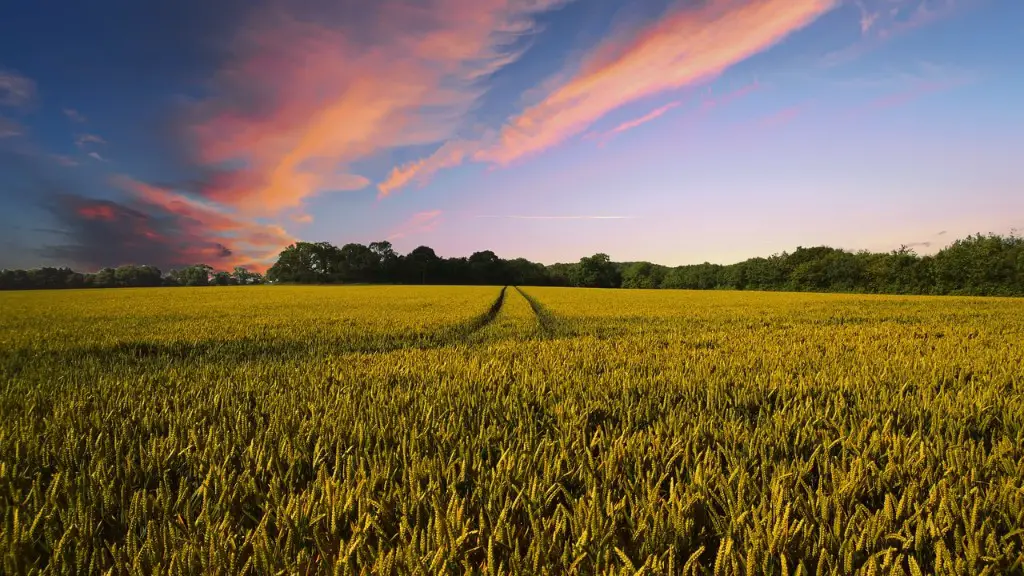Modern-day agriculture is a leading source of greenhouse gas emissions that contribute to climate change. Globally, agricultural activities are estimated to be responsible for over 20% of total greenhouse gas (GHG) emissions, with an estimated 56% coming from agriculture-related activities. Agricultural activities produce two main types of GHGs: methane and carbon dioxide. These GHGs are produced through activities such as land-use change, animal husbandry, and use of synthetic fertilizer and agrochemicals.
Methane (CH4) is produced from livestock, such as cows and sheep, when they digest their food. The large amount of manure produced by these animals releases CH4 when it is broken down in anaerobic conditions. As well, large-scale rice production also produces CH4 when organic matter becomes submerged in water. These sources of CH4 account for approximately 12-15% of global agricultural emissions.
Carbon dioxide (CO2) is created when land is cleared for agricultural activities, such as ploughing and burning the land to prepare for agricultural production or when the soil or organic matter (e.g., crop residues, animal manure) is disturbed or combusted. It is estimated that approximately one-third of global agricultural emissions come from land-use change and soil disturbance, with the majority of these emissions resulting from deforestation. Additionally, the use of fossil fuel in a variety of agricultural activities, such as the operation of farm machinery and running farm infrastructure, accounts for a significant amount of CO2 emissions.
Nitrous oxide (N2O) is produced from synthetic fertilizer and agricultural by-products. N2O is released when chemical fertilizer is applied to fields and when livestock excrete waste. In the atmosphere, N2O is more than 300 times more potent as a GHG than CO2, making it a significant contributor to global warming.
Agricultural activities also contribute to atmospheric aerosols, which have a cooling effect on climate change. Soil particles and dust emitted by farm machinery during activities, such as ploughing, can result in a cooling effect of an estimated -0.5°C to -1.5°C. Natural sources such as windblown dust, oceans, and volcanic eruptions also contribute to atmospheric aerosols. However, their cooling effects are relatively small compared to those of agricultural activities.
Overall, agricultural activities are one of the major sources of GHG emissions, contributing to climate change. To reduce emissions, land-use change and fertilizer use must be minimized, and more efficient agricultural production systems must be implemented.
Impact of Agricultural Production on GHG Emissions
Agriculture is an increasingly important contributor to global GHG emissions, accounting for more than a quarter of annual GHG emissions. This is largely due to the fertilizer and agrochemical-intensive production of food and feed crops, as well as the use of synthetic fertilizers and the burning of crop residues. It is estimated that the global GHG emissions from agricultural production account for 13-17% of total human-caused GHG emissions.
Fertilizer use is the main source of agricultural emissions. Nitrous oxide (N2O) and methane (CH4) emissions from fertilizer applications account for approximately 60% of agricultural emissions. The use of chemical nitrogen-based fertilizers is a significant source of N2O and CH4, which are emitted from fertilizer applications and crop residue burning. These nitrogen-based fertilizers act as sources of nitrous oxide and methane by releasing these gases into the atmosphere.
In addition to fertilizer use, land-use change is a major source of agricultural GHG emissions, accounting for approximately 24-30% of emissions. This includes the clearing of forests and land for agriculture, as well as the plowing and burning of crop residues. These activities convert carbon stored in the soil and vegetation into GHG emissions.
Animal husbandry is also a significant source of agricultural GHG emissions, accounting for approximately 16-25% of emissions. These emissions are mainly due to the digestion and fermentation of feed by livestock, which produces methane gas that is released into the atmosphere. Manure is also a significant source of emissions, as it releases methane through anaerobic decomposition.
Overall, agricultural production is a major source of GHG emissions that contribute to global climate change. Reducing GHG emissions from these sources requires improved agricultural production systems and practices that reduce the use of synthetic fertilizers, limit land-use change, and reduce the emission of methane from animals and manure.
Effect of Agriculture on Land Use and Climate Change
Agricultural production is a major contributor to climate change, due to its contribution to land use change and GHG emissions. The use of agricultural land for crop production has contributed to deforestation and the conversion of grasslands and wetlands into agricultural fields, resulting in an increase in GHG emissions. In addition, the burning of crop residues is a major source of GHG emissions, contributing to global warming.
The conversion of grasslands and wetlands into agricultural fields also reduces carbon capture and storage, making it difficult for the soil to absorb carbon dioxide and reduce GHG emissions. This leads to a further increase in GHG emissions, as well as an increase in global warming. In addition, the use of chemical fertilizers and agrochemicals also contribute to GHG emissions and have been linked to the depletion of soils and the contamination of soil and water sources.
The increasing use of antibiotics in animal husbandry has also had a significant impact on the environment, with antibiotic-resistant strains of bacteria being released into the environment, leading to the contamination of soil, water, and air. The use of these chemicals in animal husbandry has been linked to an increase in allergies and other health issues, as a result of air and water contamination.
The effects of agricultural activities on the environment are numerous, and can range from increases in GHG emissions to the degradation of soils. As a result, it is important to reduce emissions and promote environmentally friendly agricultural practices, in order to combat climate change and protect the environment.
Strategies to Reduce Agricultural GHG Emissions
Reducing GHG emissions from the agricultural sector requires the implementation of various strategies, such as improved cropping practices, reduced fertilizer use, improved animal husbandry systems, and reduced land-use change. Improved crop rotation and soil management practices can reduce the need for synthetic fertilizers, resulting in fewer GHG emissions.
These practices can also reduce the emission of methane from livestock, as well as reduce the need for land-use change. Additionally, improved animal husbandry systems can reduce the use of antibiotics and improve animal health and welfare. This can reduce the risk of GHG emissions from the use of these chemicals, as well as the contamination of soil, water, and air.
It is also important to reduce the burning of crop residues and agricultural waste, as this is a significant source of GHG emissions. Reducing the burning of these materials can help to reduce GHG emissions and climate change.
Finally, governments can create incentives and policies to promote sustainable agricultural practices and reduce GHG emissions. These policies can include the implementation of carbon taxes, cap-and-trade systems, and subsidies for sustainable agriculture.
Conclusion
Agriculture is a major contributor to GHG emissions and climate change, due to its contribution to land-use change and the use of synthetic fertilizers and agricultural chemicals. In order to reduce these emissions, improved cropping practices, reduced fertilizer use, improved animal husbandry systems, and reduced land-use change must be implemented. Additionally, policies and incentives must be created to promote the adoption of more sustainable agricultural practices.
